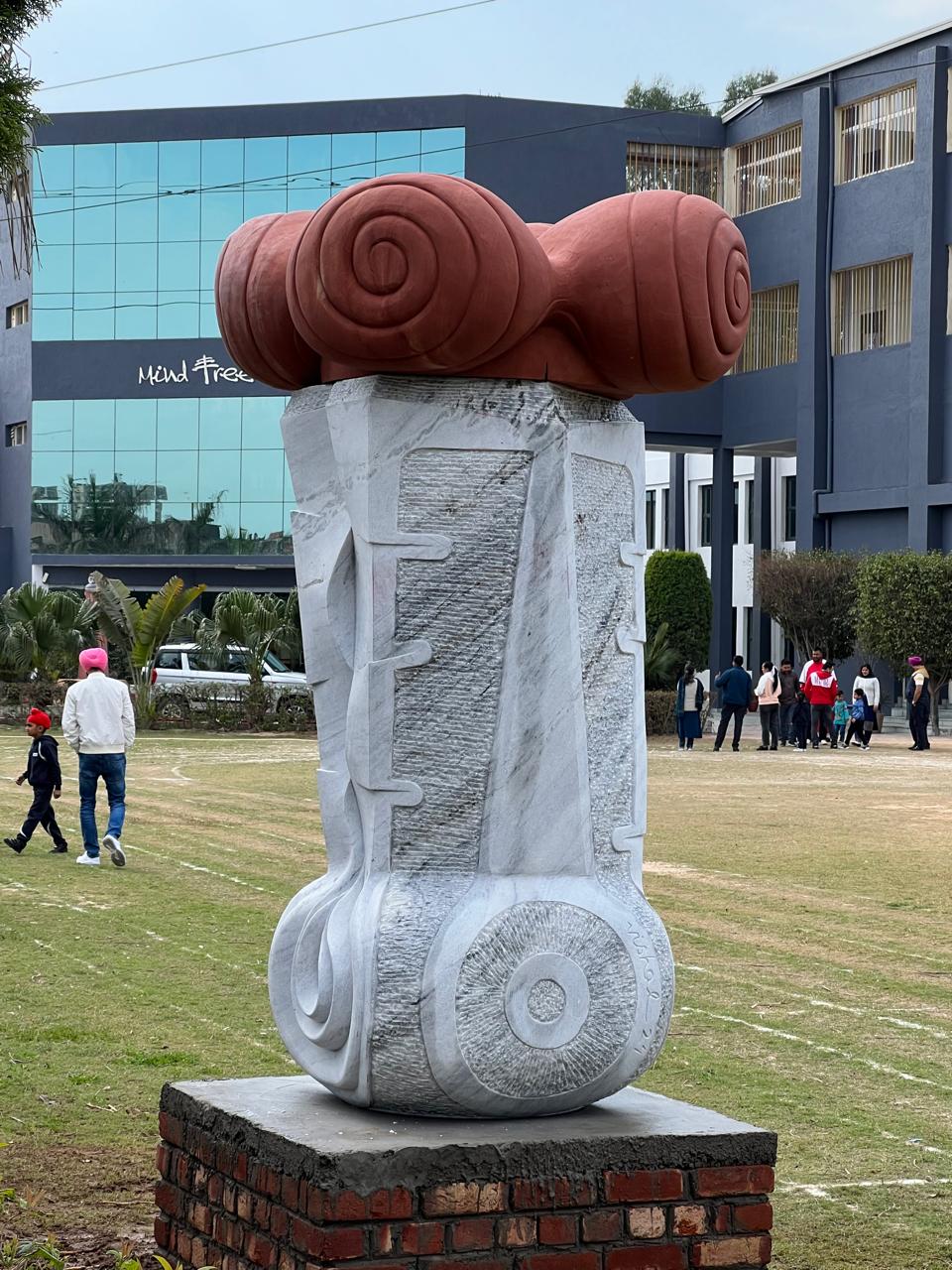Stones speak to me, says Chandigarh-based sculptor Vishal Bhatnagar
His works find a pride of place in City Beautiful at strategic locations like Haryana Vidhan Sabha Bhawan, Rose Garden, et al. Not too long ago, his bronze sculptures rubbed shoulders with the likes of Andy Warhol, Salvador Dali and Auguste Rodin at an auction in London. Four of his creations sold for a whopping 40,000 Euros! Achievements of noted sculptor Vishal Bhatnagar, recipient of National Award and many other laurels like Kalashree, may not have got due consideration in Chandigarh where he studied, lives and works.
But nothing diminishes the power of his passion, bordering on junoon, which manifests in his larger-than-life sculptures. As he has just returned after creating a mammoth work in stone at the 4th ITM Baroda International Sculptors Symposium at Vadodhra, he shares how he can speak to stones, right now his favourite medium. From the moment he lays eyes on blocks of the cold marble in quarries, he can actually communicate with his muse and shape it the way his heart dictates. “Art is created when eyes, heart, mind and hand are in sync,” he observes.
His latest series is called Bull and Moon, both symbols connected with Lord Shiva. A PhD in Symbolism of Shaiv Darshan not only made him explore it fully, but also made him realise how ancient Indian philosophy is at once simple, yet intricately complex. Till 2015, he interpreted it literally. Today, he is delving into its complexities. Thus Shivlingam for him is a journey from infinite to infinite, Tantra too represents mystical quest of the self to reach the ultimate power. And if you think Moon’s only symbolism for him lies in how Shiva wears the celestial entity on his head, he reminds, “Moon, after all, is a cosmic symbol, as much an Eid Ka Chand as our Karva Chauth Ka, as much a subject of study for scientists. In short, who can say to whom it belongs?”
Since ‘Indian iconography works in many layers’, when he creates a man and woman on a bull, it’s not a simplistic rendition of Shiva and Parvati. “Were I to do that, what would be the difference between me and a folk artist?” Indeed, like our folk art, he touches base with his roots. But since his immediate environment too informs his artistic sensibilities, he breathes a new language into the traditional, melding ancient and modern aesthetics. Seeking inspiration from renowned artists, including Alberto Giacometti, Swiss sculptor and painter known for human figures, Vishal’s Big Foot series took birth.

Back in college, “Michelangelo was the ultimate.” But real lessons were learnt from his teachers like Sumangal Roy and Jagdish Lal Ahuja at the Government College of Art, Chandigarh, from where he did his BFA in sculpture. During his MFA at I.K.S. University Khairagarh, his interest in Vedic studies was triggered. At GCA, he still recalls the moment when he was asked to hold clay in his hands for an entire day. It was there and then he learnt how to embrace one’s medium. He muses, “Until you become one with your medium and it becomes part of your soul as well as life, your artistic journey never takes off.”
Life study at GCA too informed his art and came in handy when he created statues of Dr Baba Saheb Ambedkar and Subash Chandra Bose. More recently, he was taken on board to supervise and complete Shaheed Bhagat Singh’s statue at the Shaheed Bhagat Singh International Airport, Mohali. As a rule, he says no to commissioned projects. Yet, as and when he commits himself to creating realistic sculptures, “Much research is involved, especially in getting the anatomical details right.”
Of course, being a sculptor is not an easy task. If the cost of the material, both bronze and stone, itself is prohibitive, the process is simply labour of love.

However, it’s not love’s labour lost but gained manifold. City Beautiful, where he has been living since decades, too has gained much. Apart from his sculptures dotting its cityscape, he proclaims how in the past few decades every single stone (of the sculptures in the city) has been selected by him. Indeed, city residents who may have encountered his works every now and then might be oblivious to the creator’s identity, as few have ever reverted to him. He rues, “Not many understand the language of sculptures.”
Yet since his work is in the Government Museum and Art Gallery’s collection as well as bought by city’s cognoscenti, those who matter, have not missed his unusual creative spark. However, for Vishal real creativity is not the end goal but the process. As Robert Henri said, “The object isn’t to make art, it’s to be in that wonderful state which makes art inevitable.”
Entertainment